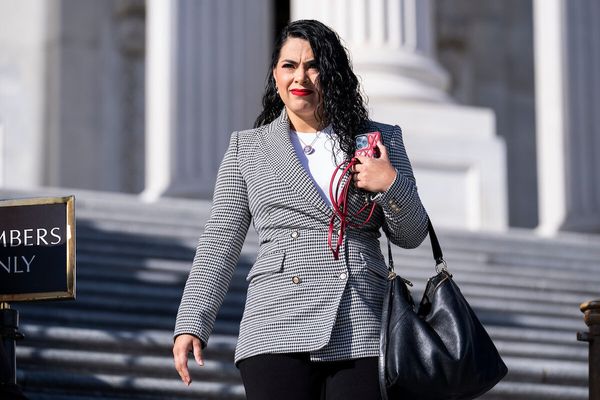Nancy Pelosi has been simply the best speaker of the House of the modern era. She is probably the best speaker in U.S. history. It was time for her to step down from her leadership role, but it likely will be a long time before we see someone of either party master the job as well as she did.
Her four terms as speaker, two during unified Democratic government and two under Republican presidents and divided government, were unusually productive. During President Barack Obama’s first term, when Democrats controlled both houses of Congress, she steered the Affordable Care Act into law. When her party operated with a fragile majority over the last two years, she somehow again found ways to pass liberal priorities, sometimes on party-line votes and sometimes with bipartisan support.
None of this was assured. Unified government wasn’t nearly as productive during the tenure of Democratic Speaker Tom Foley in the 1990s or under Republicans Dennis Hastert in the 2000s or Paul Ryan in the 2010s. Presidents matter too, as does the Senate, and the speaker is only the leader of the majority party. But Pelosi proved to be a genius of process and people.
If she brought something to the House floor, everyone knew she had the votes. Over and over again, she found creative ways to package the Democratic Party’s priorities in a manner that allowed something people thought was a lost cause to wind up on the president’s desk. Most notably, she managed to save the Affordable Care Act when a filibuster-proof supermajority had evaporated in the Senate by adopting some components of the bill using a procedural maneuver known as reconciliation. More than a decade later, she drove a huge legislative agenda including a bipartisan infrastructure bill as well as the Inflation Reduction Act addressing climate change, health care and other priorities.
All the procedure in the world can’t help if the votes aren’t there. But Pelosi would find a path when one wasn’t apparent. Some of this was inspiration, as when she convinced the Democratic caucus to stick with Obamacare when things looked bleak. And some of it was finding the formula that would keep every faction of her caucus on board. It helped that Democrats appear to have trusted her word. It helped even more that Democratic lawmakers had enough faith in her abilities that there was never a stampede to the exits when times got rough.
As well as she handled unified government, Pelosi’s strongest moments were actually during her two terms with Republicans in the White House. In 2008, with the financial crisis threatening economic doom and both liberal Democrats and conservative Republicans extremely skeptical of having government step in, Pelosi somehow managed to find the votes to pass legislation to stabilize the financial system.
In 2020, confronted with an indifferent Senate and an out-to-lunch president, Pelosi insisted on a forceful government response to the coronavirus pandemic and the economic fallout.
She deserves credit, too, for silencing Democratic calls for a revenge impeachment of President George W. Bush in 2007. She also wasn’t willing to damage the nation by attempting to force a withdrawal from Iraq; she was strongly opposed to the war but knew that Democrats didn’t have the votes to win that fight. There are liberals who believe she acted much too slowly in the impeachments of President Donald Trump that she ultimately did support, but she was right to force supporters to wait until the facts absolutely demanded action rather than jumping at the first sign of legitimate justification.
And as the first woman to hold the speakership, she presided over an institution that during her tenure saw the number of female representatives climb sharply to more than 120 today. Pelosi didn’t just symbolize the newly diverse Democratic caucus; she worked to make it happen.
Was she faultless? No. Beyond occasional missteps, the most warranted criticism of her tenure was that she continued a long-term shift toward greater centralization in the House, leaving rank-and-file members of both parties with fewer substantive responsibilities. Pelosi perfected the modern, powerful speakership invented by Democrat Tip O’Neill during the administrations of Jimmy Carter and Ronald Reagan.
Since O’Neill, most speakers were either too aggrandizing (such as Jim Wright and Newt Gingrich) or too passive (Foley and Hastert). Republican John Boehner got the balance right, but couldn’t bring his party with him. Pelosi didn’t have that problem. Still, the House of Representatives as a whole functions better and is more powerful when it unleashes the abilities of all members, especially those from the majority party. In that regard, her tenure wasn’t especially good for the health of the House.
Her skill and performance as speaker is hard to dispute no matter one’s political views. Whether the policies she supported and in many cases enacted were the right ones is a debate that Democrats and Republicans view differently.
But if the question is whether she was good at her job, the only answer is that she was great at it. Very likely the best ever.
____
ABOUT THE WRITER
Jonathan Bernstein is a Bloomberg Opinion columnist covering politics and policy. A former professor of political science at the University of Texas at San Antonio and DePauw University, he wrote A Plain Blog About Politics.
This column does not necessarily reflect the opinion of the editorial board or Bloomberg LP and its owners.







